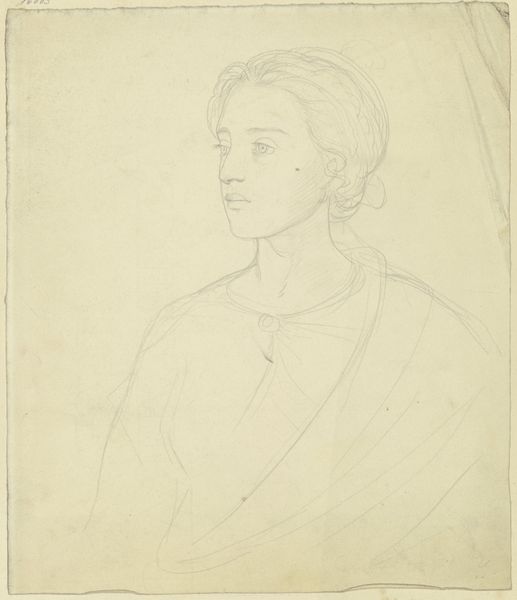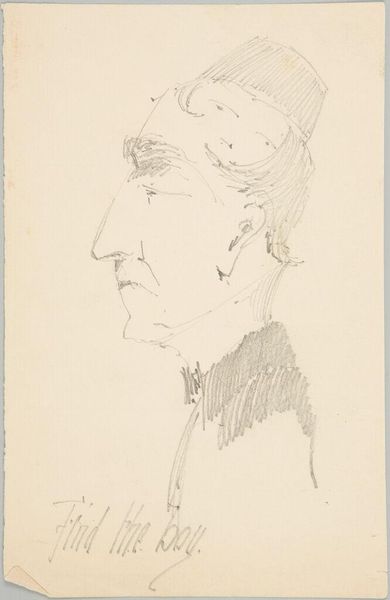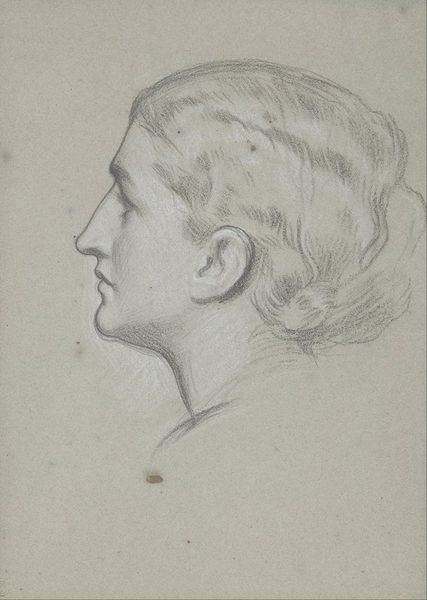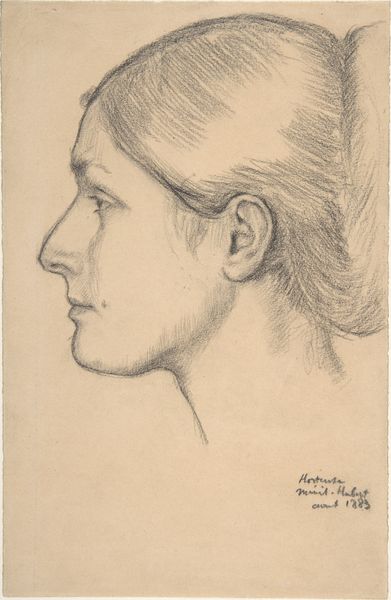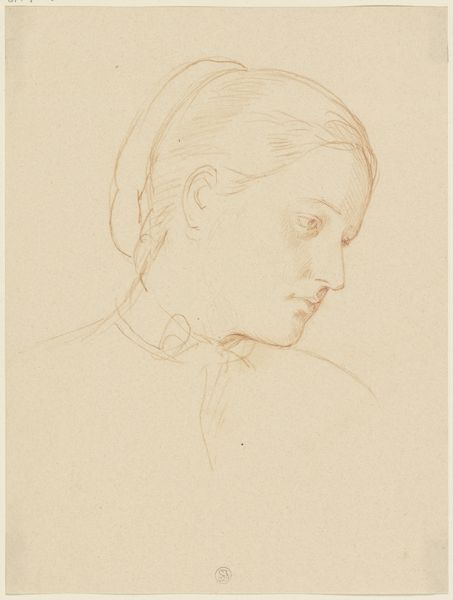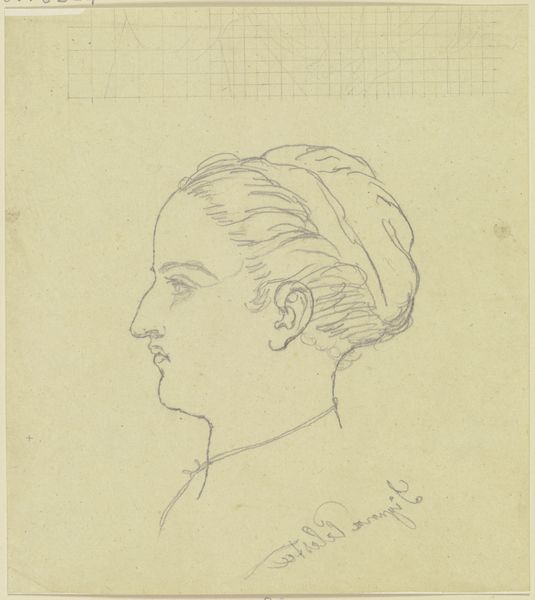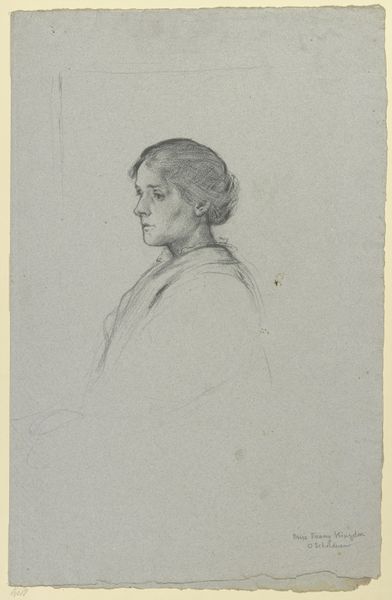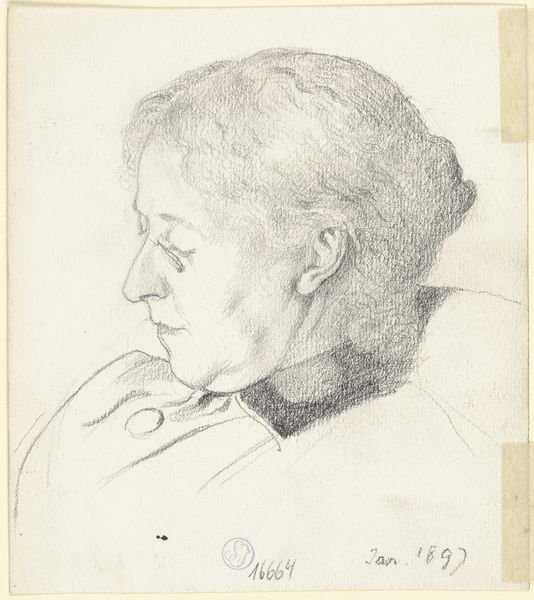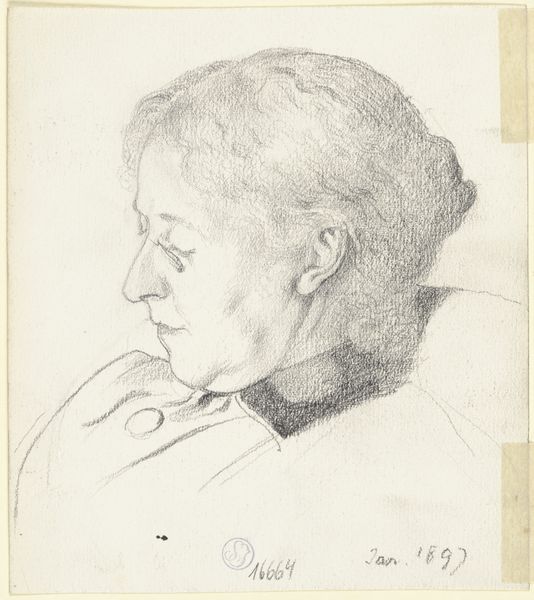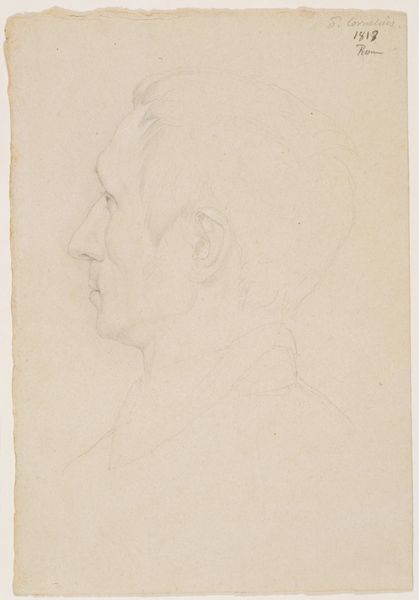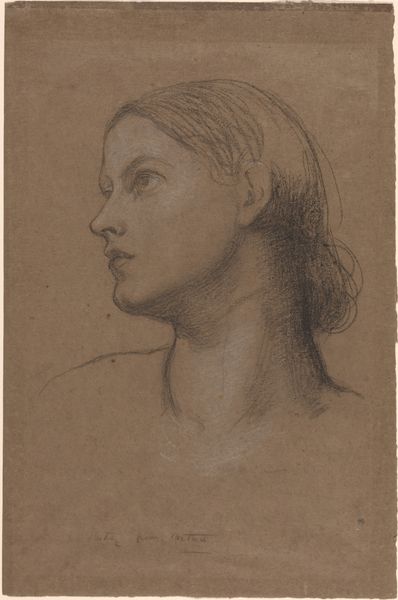
Dimensions: 205 mm (height) x 156 mm (width) (bladmaal)
Editor: This delicate pencil drawing, "Ældre kvinde i profil," by Elisabeth Jerichau Baumann from 1866, has a quiet, almost melancholic mood. What strikes me is the averted gaze and the soft lines. How do you interpret this work? Curator: Baumann’s choice to depict an older woman in profile, with closed eyes, immediately prompts questions about visibility and representation within the art world of 1866. What does it mean to center a woman, and particularly an aging woman, during a time when idealized beauty standards prevailed? This intimate portrait challenges us to consider the social and cultural value placed on women, prompting a conversation around age, beauty, and the female gaze. How do you see this challenging conventional portraiture? Editor: That's interesting, I hadn’t thought of it that way. I was focused on the delicate rendering. It seems to value inner reflection rather than outward appearance. Curator: Exactly! And isn't that in itself a statement? To move away from objectification and toward interiority. How might we also consider Baumann's own position as a female artist? How did that influence her choices of subject matter and portrayal? Editor: So, by depicting this older woman, Baumann might be subtly critiquing the art world's focus on youth and beauty, and carving out a space for a more diverse range of female representation. Curator: Precisely. The drawing, at first glance, may appear to be simply a portrait but really it serves as a quiet act of resistance against prevailing social norms. Editor: This gives me a lot to think about regarding how even a simple portrait can hold complex cultural meaning. Thanks! Curator: My pleasure! It is always fascinating to consider how artworks converse with their socio-historical contexts.
Comments
No comments
Be the first to comment and join the conversation on the ultimate creative platform.
